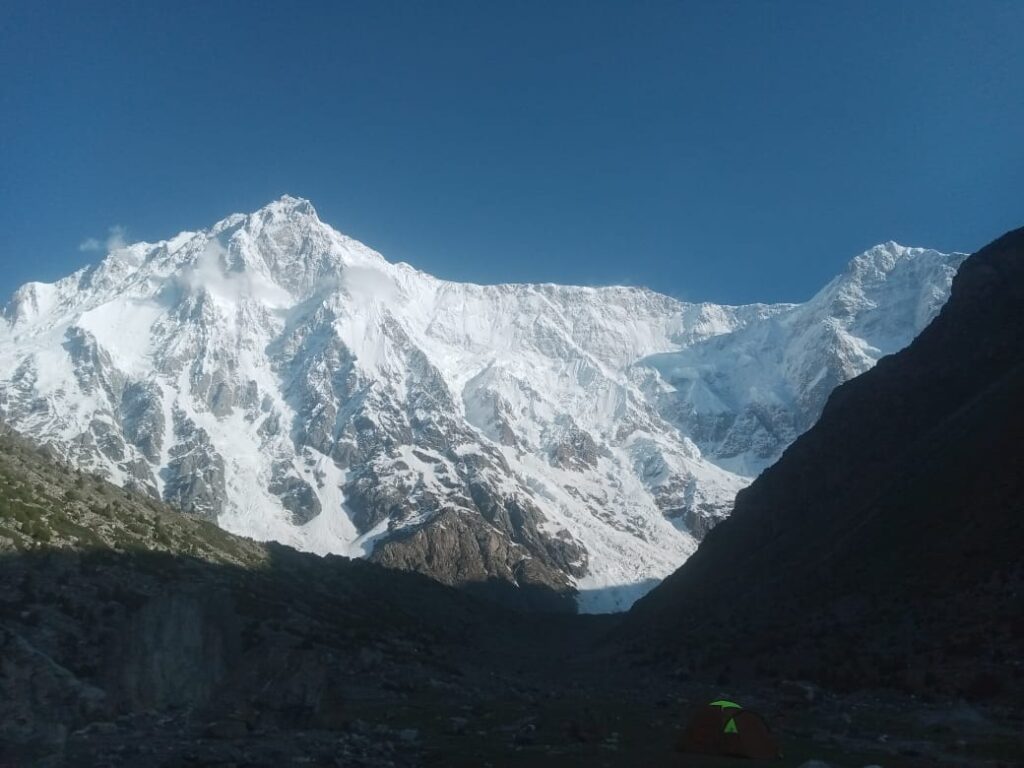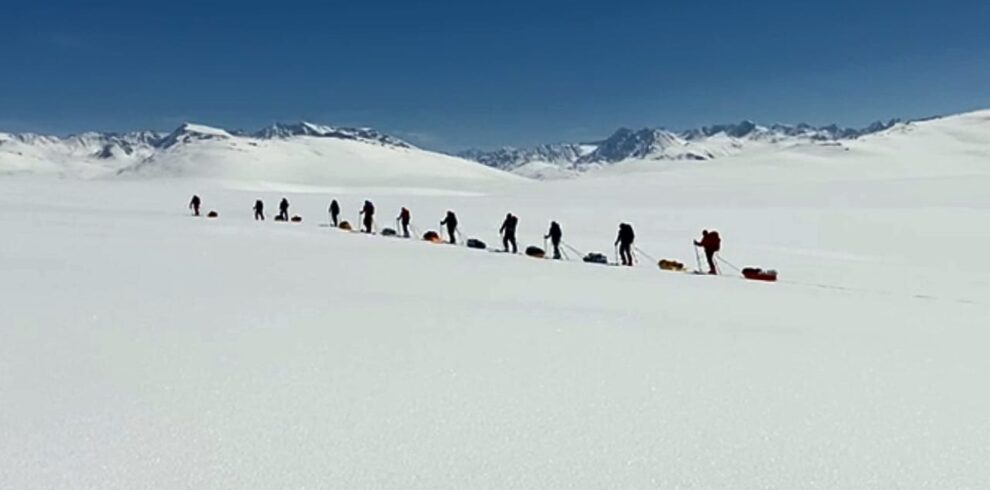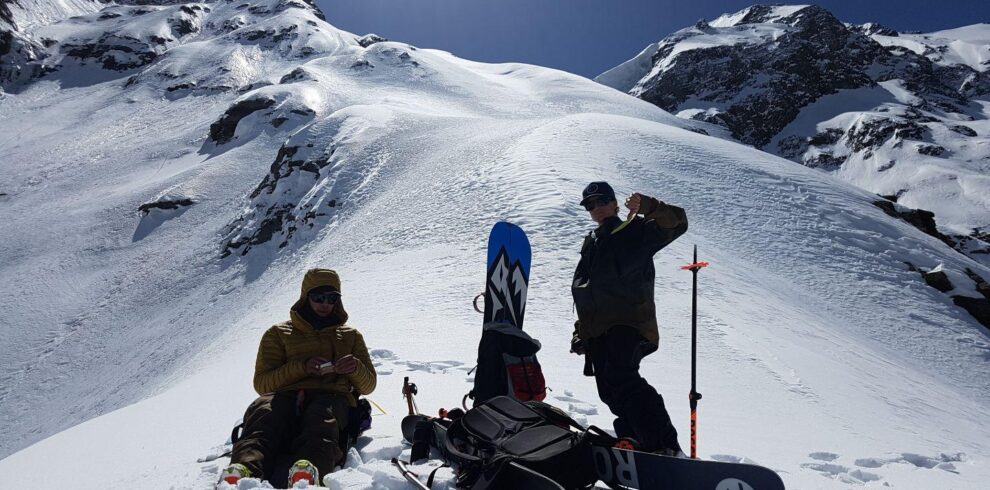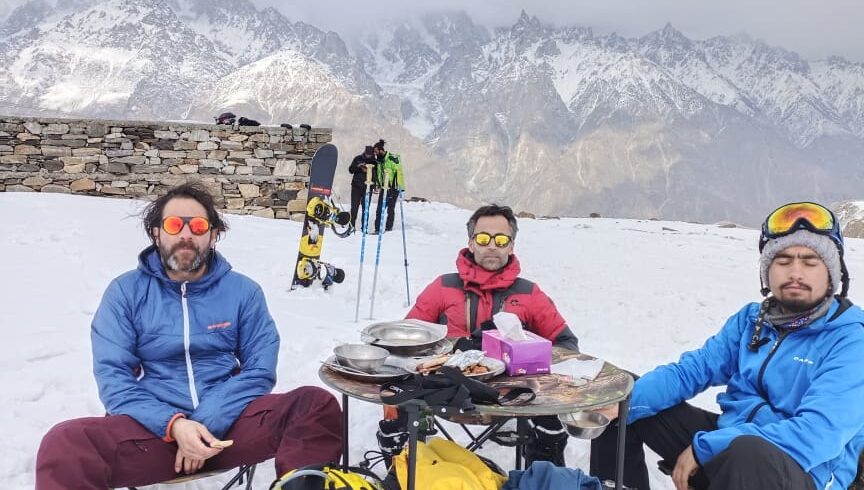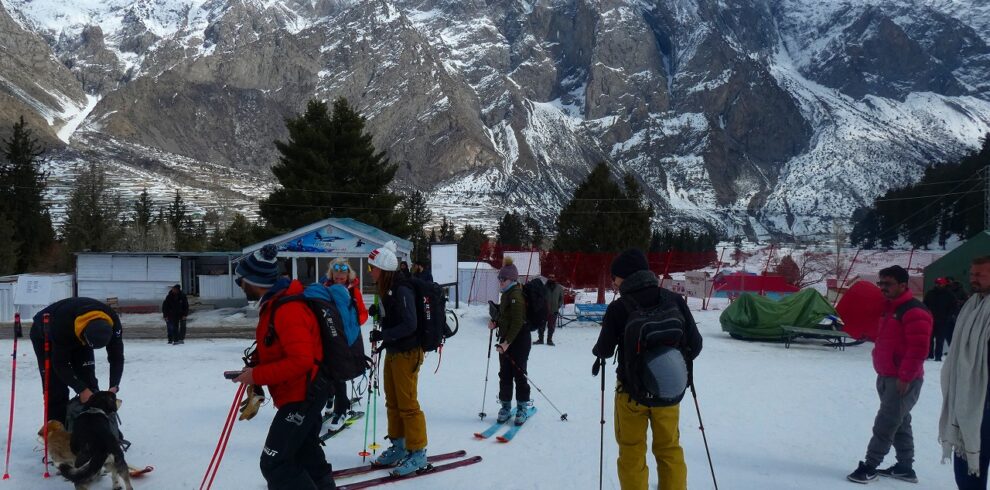Overview
NANGA PARBAT 8125M CLIMBING EXPEDITION PAKISTAN
Nanga Parbat means “Naked Mountain” and its alternative name is “Diamir Peak” which means “The King of the Mountains” is the 2nd highest peak in Pakistan after the mount K-2 and 9th position in the world, located at the furthermost Western end of the Himalayas, where the range of Himalayan mountain ends and Karakorum starts and it is the Western end pillar of the Himalayas. The central Himalayas are located in Nepal, while the Eastern. Mountains extend to the border of Bhutan and Sikkim and the Western end is in the Northern Areas of Pakistan. The massif of the Nanga Parbat forms the border between the districts of Astore to the East, and Chilas-Diamir to the West Indus River flows to the North at about an altitude of 1200M, creating an impressive difference in height and marvelous sceneries. The Peak can be viewed from the Karakorum Highway that rises near the famous curve of the Indus River close to its confluence with the Gilgit River and the homonyms town. The Nanga Parbat is lying on the main air route from Islamabad to Gilgit and Skardu and can
be seen in its full majesty and fury from the air. The Nanga Parbat was discovered in the nineteenth century by Europeans, Schlagintweit brothers from Germany in 1854, and drew a panoramic view of this mountain that is the first known picture of Nanga Parbat Peak. After that, the world came to know about Nanga Parbat in the Himalayas and the curse of it began. It has been climbed first time by German- Austrian Mountaineer Mr. Berman Buhl in 1953 and became the focus of the mountaineers in the world. Before 1953 some expeditions tried to summit but they could not succeed to scale and many of them lost their lives on the way to the summit. The Nanga Parbat is one of the most challenging mountains in the world to climb and has the largest history of disaster and failures than other mountain in the world and has claimed more lives than any of the mountains in the Karakorum and the Himalayas thus becoming the most murderous peak in the world and always been associated with tragedies and tribulations until it was climbed in 1953. Therefore, it has the reputation of the “KILLER MOUNTAIN” and is also re-known by this name.
CLIMBING ROUTES ON NANGA PARBAT:
The Nanga Parbat main peak has a height of 8125M/26660 feet and has three vast faces forming three, glaciers and rivers respectively. They are named after the villages that lie beneath. RAKHIOT FACE that is the North Face of Nanga Parbat, dominated by the
North and South Silver Crag and Silver Plateau. This route is the heaviest in distance from the main summit and demands enormous preparation, as well as vigor to climb. Many German climbers tried their lunch by this route and most of them ended with many casualties and tragedies of their members therefore it was named “The German Fateful Mountain. This mountain was
successfully climbed first time by this route in 1953 by the distinguished mountaineer Mr. Hermann Buhl from Austria, who was a member of the German-Austrian Expedition led by Dr. Kar Herlighoffer. DIAMIR FACE, which is West or Northwest Face is rocky in the beginning. It converts itself into ice fields around Nanga Parbat Peak. It was first climbed by this route by another German Expedition in 1962 by the
The same leader, when Tony Kinshofer, A. Mannhardt, and S Low reached the summit and got into an accident, died while descending. This route was later called the German or Classical route, or the normal route, or Kingshofer. Route. The RUPAL FACE is the South Face, the highest wall 4500M in the world with an average slope of 57 degrees, a marvelous creation of nature. It was climbed for the first time on this route in 1970 by two German-speaking brothers from Italian Tyrol, Mr. Reinhold and Gunther Messner, and the expedition was led again by Dr. Herlighofer. Many life casualties during the climbing on Nanga Parbat are due to the enormous height, with all consequences to human organisms at altitudes above 7000M, called death zones, gathered with extreme weather conditions. The latter, in part a result of the specific geographical position of the mountain, monsoon periods, and tropical climate in the surrounding valleys, leading to drastic temperature changes during the day and night also in altitude (-30 to +30 degrees Celsius), quick dynamic change in conditions; sudden storms; hurricane winds; excessive ice-falls and avalanches, combined with rapid glacier movements and change in crevasse relief. All this has led to Nanga Parbat acquiring a bad reputation, assigning it the name “KILLER MOUNTAIN”.
HIGHLIGHTS OF EXPEDITION
- Majestic Views: Climbing Broad Peak offers unparalleled views of the Hindu Kush range, vast glaciers, and deep valleys.
- Remote and Untouched: The expedition takes you through one of the most remote and less-traveled regions of Pakistan, offering a unique wilderness experience.
- Technical Challenge: The climb is known for its difficulty, making it a thrilling test for experienced mountaineers.
- Cultural Experience: The journey begins in Chitral, a region rich in cultural heritage, where climbers can interact with the local Kalash people and explore ancient traditions.

